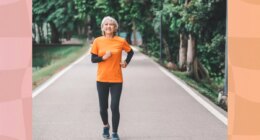
The secret to getting more out of exercise? It’s not what you do – it’s when you do it
Current science suggests that chrono-activity or adjusting our regimes to suit our body clocks, plus short, sharp workouts, are the key to a beneficial exercise routine
Thousands of us have started 2023 with new exercise programmes promising to get us fit, muscle-bound and slim. But the latest science of chrono-exercise (sometimes called chrono-activity) suggests that what really counts isn’t what we do, or even how we do it, but when we do it.
Of course, moving at any time of the day is good. But we now know that our bodies and brains change over the course of 24 hours, with chemicals, proteins and hormones ebbing and flowing almost hour by hour. So perhaps it’s hardly surprisingly that a string of new studies suggests that timing our exercise to optimally match our body’s circadian rhythms could reap additional rewards. And that means faster results – and less time in the gym.
A new study published in the European Journal of Preventative Cardiology found that, for those of us wanting to fend off heart disease and stroke, the optimal time of day to move is between 8am and 11am. And preferably closer to 11am: “The late morning seemed to be the most ideal timing,” explained study author, Gali Albalak.
Albalak and her colleagues monitored 86,657 participants (aged 42-76) over a period of six years, using heart-rate data collected from wrist trackers. The data showed the same results, irrespective of personal chronobiology. In other words, owls benefited as much as larks from morning movement. Women appeared to benefit the most, reflecting earlier studies that also found morning to be a particularly effective time for females. A report from Skidmore College in the US found that women who exercised in the morning shed more abdominal fat than women who exercised later in the day. To boot, the female morning movers were also more likely to lower their blood pressure.

So, should we all be exercising in the morning and putting our feet up in the evening? Not so fast. When it comes to men, or those with type 2 diabetes, the data shows a different picture. The Skidmore College researchers found that men who exercised later in the day markedly reduced their blood pressure, cholesterol, body fat and feelings of fatigue.
There’s another reason women might not want to shake their booty in the morning and then loll, virtuously, on the sofa. For both sexes, the optimal time for building and preserving muscle appears to be later in the day. From the age of 30, our muscles start to atrophy, a process that accelerates after the age of 60. All of us should be lifting some weight or doing some resistance work at least once a week. Multiple studies suggest that afternoons and evenings are the best time to do this: our muscles increase in strength during the day, so that by late afternoon, they are at peak fortitude, enabling us to lift more, for longer. Which means – very simply – that we build muscle more effectively and efficiently, and with less perceived effort, towards the end of the day. Again, studies indicate that the benefits of resistance and strength training, done in the evening, are more pronounced for women, although it’s not clear why.
READ RELATED: 22 Lululemon Sale Section Deals to Shop Now: Leggings, Sports Bras, Sweatpants, Jackets
Thankfully, lengthy weight-training sessions are no longer necessary. The current trend for micro-dosing (10-15 minute sessions a few times a week) arose after studies showed short, frequent workouts to be as effective as hour-long sessions. Lifting hand weights or working with a resistance band during the first 10 minutes of your favourite TV programme is enough to keep withered muscles at bay. For extra efficiency, use heavier weights or movements that work multiple muscles in a single go. Sports scientists call these multi-joint exercises – squats, lunges and push-ups, for example.
Again, anyone diabetic or pre-diabetic should consider some gentle movement after dinner, when our glucose tolerance is typically lower, and when large, starchy meals can trigger hefty blood sugar spikes. Incidentally, evidence suggests – for diabetic men – afternoon exercise is best for improving blood glucose levels, while mornings are the least effective.
There’s just one period of time when physical exertion is consistently deemed detrimental to our health: between the hours of midnight and 6am. Albalak’s study found that moving during these hours was associated with a greater risk of heart disease and stroke. During the night, our bodies shift into rest-and-repair mode, and while a gentle amble won’t hurt, your body won’t thank you for doing jumping jacks at 3am.
What about stretching? Again, studies indicate that evening may be the better time. Our joints and muscles increase in flexibility as the day goes by, peaking at 7pm. Some researchers speculate that the greater flexibility accompanying dusk may be the result of certain hormones peaking at this time and rendering our tendons less stiff. This means we can stretch more deeply, with a greater range of motion, and with less chance of injury. Stretching at night also appears to reduce muscle tension and tightness the following morning, as well as relaxing the body before bed.
If we want to shift our circadian clock – to wake up more easily early in the morning, or to overcome jetlag, for example – moving at specific times of the day can help. According to neuroscientist Jennifer Heisz, exercising at 7am or between 1pm and 4pm will help nudge our body clock back. If we need to shift our bodies to a later wake-up time, she suggests working out between 7pm and 10pm.
So how might a chrono-inspired day look? A brisk walk or cycle (or house clean) between 8am and 11am, then an after-dinner stroll, followed by a few multi-joint strength exercises, and finally a spot of stretching before bed. But, as Albalak reminds me, the most important thing is to move regularly during daylight hours, at times that work for our individual schedules. She suggests that retired people, or those on more flexible schedules, experiment with chrono-activity, and that the office-bound try it at the weekend. Either way, understanding the chrono-tendencies of our own bodies might just mean we can achieve more by doing less. And who doesn’t want that?
Source: Health & wellbeing | The Guardian





